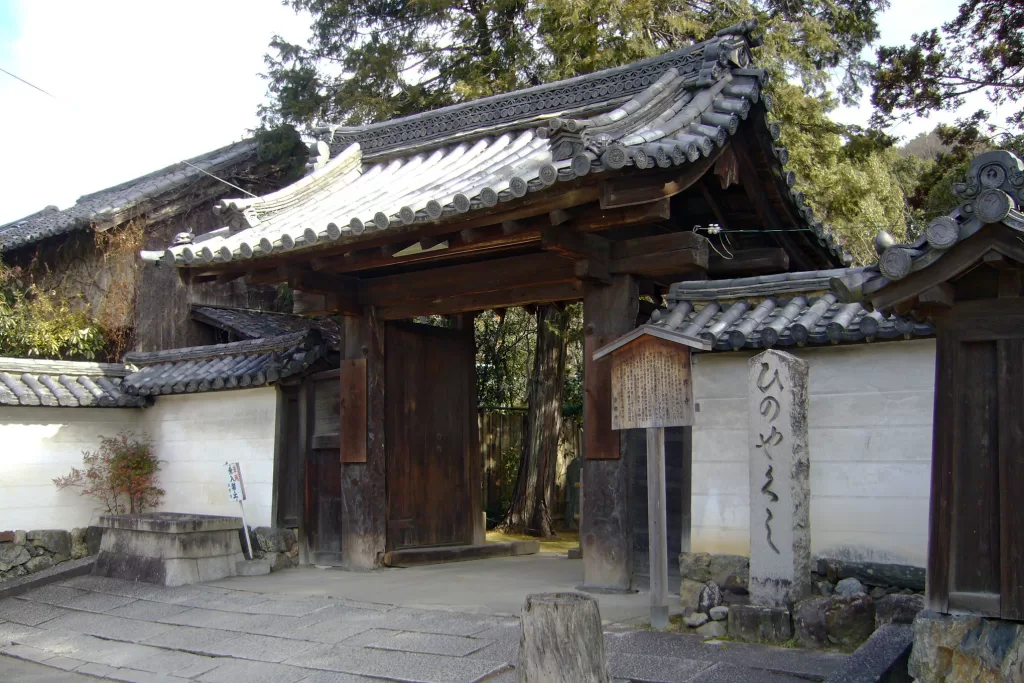Kyōto’s Historic Hadaka Odori: A Dance of Devotion and Prayer
On the night of January 14th, marking the conclusion of New Year festivities, the Hōkai-ji Temple in south-eastern Kyoto witnesses an unusual spectacle. Men and boys from the local community, wearing only a traditional loincloth known as “fundoshi”, partake in Hadaka Odori, a ceremony rooted deeply in history and faith.
The Significance of Hadaka Odori
Dating back to the Edo Period, Hadaka Odori, or “the Naked Dance”, carries immense significance for those involved. It serves as an act of devotion to the Buddhas. Beyond mere merriment, it’s a conduit for communities to express their hopes and wishes for happiness and a plentiful harvest in the coming year. It’s one of the most interesting Kyoto events in January.
Simultaneously, it embodies maternal connotations through peculiar rituals involving the dancer’s fundoshi. The front flaps are believed to bring forth easy childbirth if used as girdles by pregnant women. Thus, equal parts ritualistic and communal, this festival lies at the heart of south-east Kyoto as a cherished tradition.

A Night at Hōkai-ji Temple: From Sutras to Dances
For many attendees, their day begins well before sunset at Yakushi Hall within Hōkai-ji Temple. Offering prayers beneath Yakushi Nyorai – Medicine Buddha is a sacred way to usher in what lies ahead.
The ceremony officially commences around 7 pm with priests reading sutras aloud – a beautiful blend of sanctity and reverence within the hall. Following this austere beginning, youthful vigor ascends center stage – literally.
Young students from neighbouring schools are the first performers on Amida Hall’s stage and soon after that adult men take over. There’s no shortage of energy nor dampened spirits—despite being clad solely in fundoshi—in this part of south-eastern Kyoto on Kechigan-bi.
It is prudent not to miss the ‘purification’ process before the dance starts. To demonstrate purity and devotion, participants cleanse themselves using water from nearby wells—an experience which adds another level of meaning to their fervor when considering the winter chill.
Their collective enthusiasm shines through during their synchronized stomping and jostling amidst cries of “chōrai, chōrai!”—a phrase expressing requesting blessings for good health from Buddha—a tradition that parallels similar communal expressions across global cultures.
Wrapping Up with Blessings
As foot-stomping eventually gives way to weary contentment among dancers, priests from Yakushi Hall undertake another vital aspect of Hadaka Odori—a blessing for all assembled attendees.
The priests form a procession around Yakushi Hall, lightly brushing all individuals present with blessed sticks. Doing so while chanting sutras completes this symbolic endowment with noticeable layers of sentiments circulating amongst audiences.
Signifying more than just physical contact, this act reinforces social unity under shared beliefs while promoting communal well-being—a sentiment truly encapsulating the essence behind Hōkai-ji Temple’s annual Hadaka Odori celebration.
Host: An Integral Part of The Celebration
While housewives offer warm soup to fight off cold winds outside Amida Hall during Hadaka Odori celebrations at Hokaiji Temple—an example of community nurturing—their menfolk execute their responsibility indoors brilliantly too by delivering riveting spectacles year after year since nearly 250 years now as witnessed every Kechigan-bi—adding aesthetic relevance to his faith-driven enactment while preserving local folklore.
These myriad elements culminate into an evening that holds balmy warmth despite winter chills—an event etching itself memorably within those participating and visiting thus declaring how Hōkai-ji Temple’s annual Hadaka Odori continues being not just an event but an invaluable legacy passed across generations.
As ever so often observed about rituals – there’s much more than might be seen at first glance—Hadaka Odori’s swarming devotees strengthen this very belief by looking forward to witnessing and participating in this ‘strange’ dancing festival every January 14th – eagerly waiting for another start-of-the-year gala full of cultural relevancy waiting right around the corner promising joys aplenty.
Kechigan-bi indeed marks off calendars but definitely engrains dates on memories and ultimately hearts too—much like how any significant cultural celebration would do elsewhere globally.
If you’re staying in Kyoto during Januray, don’t miss out on the enchanting Gafūten Shōhin Bonsai Exhibition, a captivating event held annually in Kyoto.
If you’re staying in Kyoto during January, don’t miss out on the enchanting Gafūten Shōhin Bonsai Exhibition, a captivating event held annually in Kyoto.